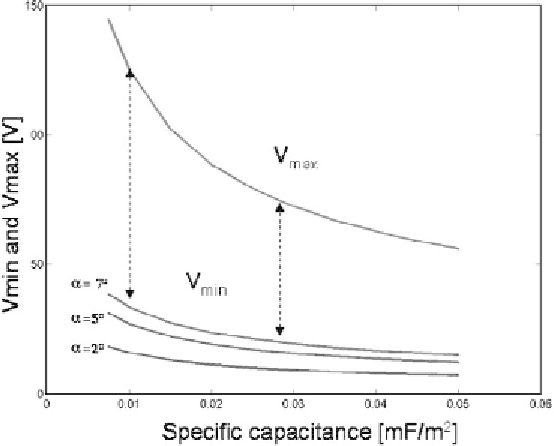Biomedical Engineering Reference
In-Depth Information
Figure 4.18
Interval
V
min
-
V
max
as a function of the capacitance
C
.
advantage in trying to increase the specific conductance of the dielectric layer: the
actuation requires lower potentials as well for
V
min
as for
V
max
.
Equation (4.40) can be equivalently written
(4.41)
f
=
2
γα θ
sin
<
f
<
γ γ θ
-
cos
=
f
min
0
EWOD
C
0
max
showing the range of the electrowetting force. The optimal solution would be the
lowest possible
f
min
and a largest possible
f
max
. First, let us analyze the conditions
for obtaining the smallest possible
f
min
. For aqueous liquids, a very hydrophobic
contact angle
q
0
is optimal for having a very low minimum force for droplet mo-
tion, because sin
q
0
~ (
p
-
q
0
) ~ 0. On the other hand, the maximum electrowet-
ting force is
f
max
=
g
SL
0
. The hydrophobic substrate that maximizes
g
SL
is the most
suitable.
4.2.2.7 Substrate Capacitance
Usually the substrate comprises of an electrode, a dielectric layer, and a hydropho-
bic layer (Figure 4.19). The dielectric layer guaranties the electric insulation in such
Figure 4.19
Total capacitance includes the contribution of the dielectric layer (Parylene, SiO
2
,
or Si
3
N
4
) and the hydrophobic layer (Teflon, SIOC, and so fourth); the contribution of the electric
double layer can be neglected.



